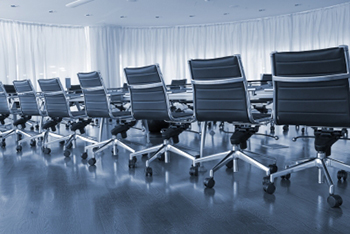Five Ways Going Green Helps Employees
 CHICAGO — Offices can bring workers down with depressing lighting, stuffy air, uncomfortable temperatures, no outdoor views and too much noise. These office design elements not only make employees unhappy, they also make them less productive, according to a report from the World Green Building Council, a coalition of green building organizations, and JLL, a real estate firm based in Chicago.
CHICAGO — Offices can bring workers down with depressing lighting, stuffy air, uncomfortable temperatures, no outdoor views and too much noise. These office design elements not only make employees unhappy, they also make them less productive, according to a report from the World Green Building Council, a coalition of green building organizations, and JLL, a real estate firm based in Chicago.
“Employees have instinctively known for years that the physical features of an office can make them feel inspired, connected and energetic, or sluggish, isolated and less motivated,” said Bob Best, executive vice president of energy and sustainability services at JLL. “Our report demonstrates just how much physical office space can affect employee productivity.”
The report titled “Health, well-being and productivity in offices: The next chapter for green building” offers five ways companies can create a better, healthier places to work.
1. “I need some [clean] air.”
Improving air quality can make a big difference in how office workers feel and function at work. According to the report, numerous studies show that high levels of carbon dioxide and volatile organic compounds (VOCs) make employees feel tired and less able to think clearly. In particular, a 2011 lab test mimicking an office with high levels of VOCs found that increasing ventilation improved workplace performance by 8 percent. Air temperature makes a difference, too; employee productivity declines by 4 percent when the office is too cold and by 6 percent when it is too hot.
2. Office workers’ new best friend: a pet plant.
Bioliphilia, which is the concept that humans connect with other living things, is an emerging area of workplace design and it’s good news for employees. A plant can help lower office stress, improve cognitive function and enhance creativity.
3. Let the sunshine in.
Office workers should sit near a window or take a walk outside during the work day.
4. Dial down the decibels.
Noise pollution is consistently reported as a major cause of workplace dissatisfaction, and one 1998 study found that participants’ ability to memorize prose dropped by 66 percent when exposed to distracting noise. Offices should have a variety of workspaces so employees are empowered to work in a collaborative, discussion space or individual, heads-down space, reducing excess noise and increasing staff productivity.
5. “Give me some space.”
In the quest to cut costs, many companies have adopted open office plans, “hot-desking” and other new workplace design concepts. Done well, these approaches reduce carbon footprints while providing quiet, private workspaces, meeting areas and informal social spaces. Done poorly, employee productivity suffers across the board.
“The key for employers is to quantify the relationship between environmental sustainability and employee productivity though data-driven measurements, and then use that data to inform a company’s workplace strategy, CSR and business goals,” Best added.
